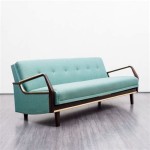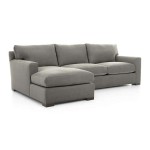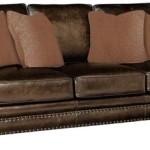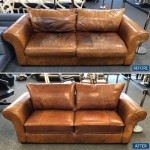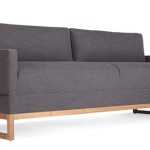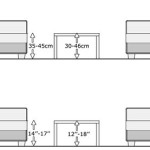The Quest for the Most Comfortable Bed Sleeper Sofa
In the modern home, versatility is paramount. Furniture must serve multiple purposes, adapting to the ever-changing needs of its occupants. Among the most versatile pieces is the sleeper sofa, a hybrid that functions as both a comfortable seating area and a convenient bed. However, the experience of sleeping on a sleeper sofa has often been compromised, with many models prioritizing space-saving design over comfort. This article delves into the factors contributing to sleeper sofa comfort, examining key design features, material choices, and mechanisms that make a bed sleeper sofa truly comfortable for overnight guests or regular use.
The ideal bed sleeper sofa bridges the gap between the convenience of a sofa bed and the restful experience of a dedicated mattress. It overcomes the limitations that have plagued previous iterations, such as thin mattresses, uncomfortable support systems, and cumbersome conversion mechanisms. By understanding the core components influencing comfort, potential buyers can make informed decisions and select a sleeper sofa that genuinely enhances their living space.
Mattress Quality and Construction
The single most important factor in determining the comfort of a bed sleeper sofa is the mattress. Conventional sleeper sofas have often featured thin, low-density foam mattresses, leading to pressure points and an overall unsatisfactory sleeping experience. Modern innovations have addressed this issue with thicker, higher-quality mattresses that incorporate various materials designed for enhanced support and comfort. These may include memory foam, innerspring coils, latex, or hybrid combinations.
Memory foam, known for its conforming properties, molds to the body's contours, distributing weight evenly and reducing pressure points. This is particularly beneficial for side sleepers who require pressure relief in the shoulders and hips. The density of the memory foam affects its performance; higher density foams provide greater support and durability. However, some individuals find memory foam to retain heat, so breathable or gel-infused options are available to mitigate this issue.
Innerspring mattresses, a staple in traditional beds, utilize a network of coils to provide support and bounce. The gauge and configuration of the coils influence the firmness and responsiveness of the mattress. Individually wrapped pocketed coils are often preferred in sleeper sofas because they contour to the body independently, minimizing motion transfer and enhancing comfort for multiple sleepers. The addition of a comfort layer, such as foam or fiber padding, on top of the coils further enhances the sleeping surface.
Latex mattresses offer a balance of support, comfort, and durability. Natural latex, derived from rubber trees, is a hypoallergenic and breathable material known for its resilience and longevity. It provides a supportive yet responsive feel, adapting to the body's contours without sinking too deeply. Latex mattresses are often preferred by those seeking a more eco-friendly and durable option. Synthetic latex alternatives are also available, offering a similar feel at a potentially lower price point.
Hybrid mattresses combine the benefits of multiple materials, such as memory foam and innerspring coils, to create a balanced sleeping surface. These mattresses typically feature a layer of memory foam or latex for comfort and pressure relief, supported by a coil system for structural integrity and support. Hybrid mattresses can be tailored to specific preferences, offering a wide range of firmness levels and comfort characteristics. The thickness of the mattress is also a key consideration. A thicker mattress generally provides greater cushioning and support, resulting in a more comfortable sleeping experience. However, thickness must be balanced with the overall design of the sleeper sofa and its ease of conversion.
The Support System: Frames and Mechanisms
Beneath the mattress, the support system plays a crucial role in determining the overall comfort and stability of a bed sleeper sofa. The frame must be sturdy and well-constructed to withstand the weight of both the sofa and the bed configuration. Common frame materials include hardwood, engineered wood, and metal. Hardwood frames are known for their strength and durability, while engineered wood offers a more affordable alternative. Metal frames provide a lightweight and robust option, often used in more contemporary designs.
The folding mechanism, which allows the sofa to convert into a bed, is another critical component. A smooth and easy-to-operate mechanism enhances the user experience and ensures that the conversion process is hassle-free. Common mechanisms include pull-out designs, fold-down designs, and click-clack designs. Pull-out sleeper sofas feature a hidden bed frame that slides out from beneath the sofa cushions. Fold-down sleeper sofas, also known as futons, convert into a bed by folding the backrest down flat. Click-clack sleeper sofas use a ratcheting mechanism to adjust the backrest to multiple positions, including a flat sleeping surface.
The quality of the support system directly impacts the stability and comfort of the sleeper sofa. A poorly constructed frame or a flimsy mechanism can result in a sagging or uneven sleeping surface. Look for models with reinforced frames and smooth, reliable mechanisms that will withstand frequent use. Some sleeper sofas also incorporate additional support features, such as metal crossbars or wooden slats, to enhance the stability of the bed frame. These features can help to prevent sagging and ensure a more comfortable and supportive sleeping surface.
The design of the support system also affects the overall comfort of the sofa. A well-designed sleeper sofa will provide ample support for the back and legs when in the sofa configuration. Look for models with supportive cushions and a comfortable seat depth. The height of the backrest is also a key consideration, as it affects the level of support provided to the upper back and neck. Some sleeper sofas feature adjustable headrests or lumbar support to enhance comfort and adjustability.
Upholstery and Design Considerations
The upholstery material of a bed sleeper sofa contributes significantly to its overall comfort and aesthetic appeal. The chosen fabric should be durable, comfortable to the touch, and easy to clean. Common upholstery materials include fabric, leather, and synthetic alternatives. Fabric upholstery is known for its versatility and wide range of colors and patterns. It is typically more affordable than leather and can be a good choice for high-traffic areas. However, some fabrics may be more prone to staining or wear and tear. Leather upholstery offers a luxurious and durable option that ages well over time. It is resistant to spills and stains and can be easily cleaned. However, leather can be more expensive than fabric and may require special care to maintain its appearance. Synthetic upholstery alternatives, such as microfiber and faux leather, provide a balance of durability, affordability, and ease of maintenance. These materials are often stain-resistant and easy to clean, making them a practical choice for families with children or pets.
The design of the sleeper sofa also plays a crucial role in its overall comfort and functionality. The shape and size of the sofa should be appropriate for the intended space and usage. Consider the dimensions of the room and the number of people who will typically use the sofa. A larger sofa may be more comfortable for lounging and sleeping, but it may also take up more space. A smaller sofa may be more suitable for smaller rooms or apartments.
The style of the sleeper sofa should complement the existing decor of the room. Choose a style that reflects your personal taste and fits in with the overall aesthetic of the space. Common styles include traditional, contemporary, and transitional. Traditional sleeper sofas often feature classic lines and ornate details, while contemporary sleeper sofas tend to have a more minimalist and modern aesthetic. Transitional sleeper sofas bridge the gap between traditional and contemporary styles, offering a versatile and timeless look.
Other design considerations include the armrest style, the cushion configuration, and the leg design. Armrests can be either padded or unpadded and can come in a variety of shapes and sizes. Padded armrests provide added comfort and support, while unpadded armrests offer a more streamlined look. The cushion configuration affects the overall comfort and appearance of the sofa. Common cushion configurations include single-seat cushions, multi-seat cushions, and tufted cushions. The leg design can also influence the overall style and stability of the sleeper sofa. Choose a leg design that complements the style of the sofa and provides adequate support.
Ultimately, the most comfortable bed sleeper sofa is the one that best meets the individual needs and preferences of the user. By carefully considering the mattress quality, the support system, the upholstery, and the design, one can select a sleeper sofa that provides both comfortable seating and restful sleep.

The Best Sleeper Sofas Of 2025 Reviews By Wirecutter

9 Best Sleeper Sofas Of 2024 Tested Reviewed By Experts

The Most Comfortable Sleeper Sofas According To Reviewers Lonny

The Best Sleeper Sofas Of 2025 Reviews By Wirecutter

The Best Sleeper Sofas Of 2025 Reviews By Wirecutter

Pearson Comfort Sleeper Sofa

The Best Sleeper Sofas Of 2025 Reviews By Wirecutter

The Most Comfortable Sleeper Sofas According To Reviewers Lonny

The Most Comfortable Sofa Bed Mattress

Tiktok Corduroy Off White Sleeper Sofa

